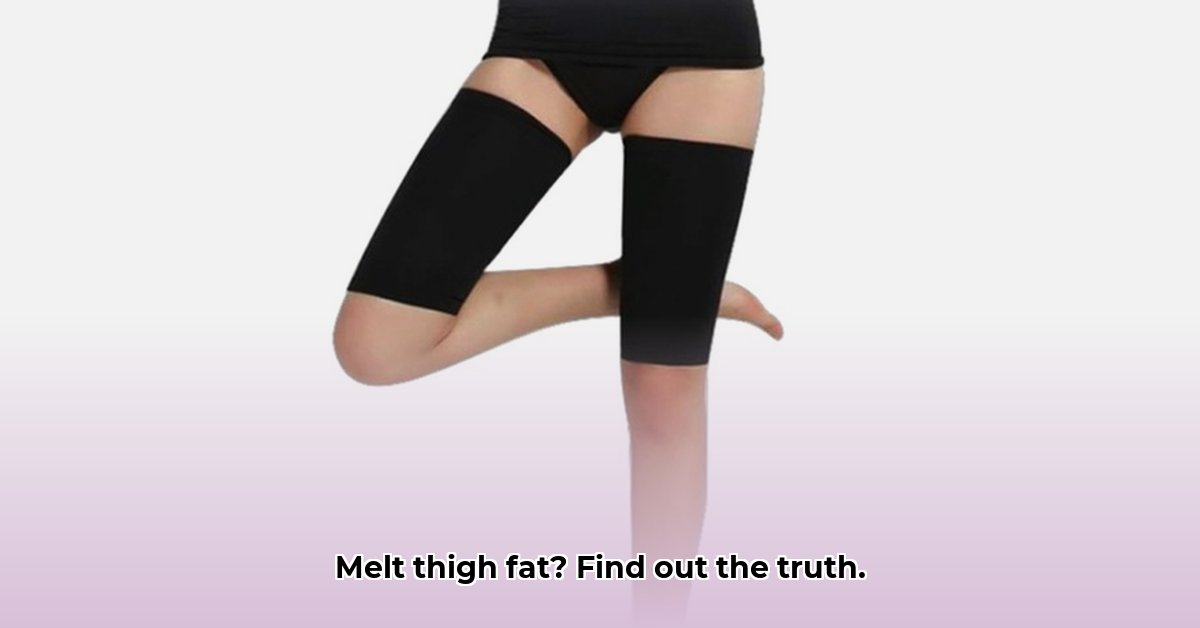
Let's be honest: the allure of rapid thigh slimming is strong. Ads for weight loss wraps promise dramatic results, but before you buy, let's separate fact from fiction. This article examines the science, marketing claims, and potential risks associated with these products to help you make an informed decision. We'll explore what these wraps actually do (and don't do), offering practical advice for achieving lasting weight loss.
Understanding the Hype: Claims vs. Reality
Many companies marketing thigh wraps make bold claims: rapid fat loss, significant inch reduction, and even detoxification. These wraps often contain ingredients like herbs, caffeine, or minerals, presented as miracle fat burners. However, the scientific evidence supporting these claims is largely absent. While certain ingredients might have minor effects, the impact is typically far less significant than the marketing suggests.
The Science (or Lack Thereof): Temporary Illusion vs. Lasting Results
The noticeable decrease in thigh size from these wraps is almost always temporary, primarily due to water loss. The wrap’s compression increases perspiration, creating a visual slimming effect. This is analogous to wearing tight socks – your leg looks thinner, but the underlying fat remains unchanged. This water loss is temporary; your body's fluid balance naturally fluctuates. True, lasting weight loss requires a holistic approach incorporating diet, exercise, and healthy habits.
Decoding the Illusion: Why You Might See (Temporary) Results
Thigh wraps rely on compression to create a temporary tightening effect, often the basis for those impressive "before and after" photos. However, this compression doesn't burn fat; it simply squeezes tissues together. It's like squeezing a sponge – it appears smaller, but the water (and fat) remains. Once removed, your thighs will likely return to their previous size. This temporary visual change shouldn't be mistaken for genuine fat reduction.
Potential Downsides: Risks and Side Effects
While generally considered safe for short-term use, potential drawbacks exist. Some individuals experience skin irritation or allergic reactions, especially those with sensitive skin or allergies to the wrap's ingredients. The tight compression can also cause discomfort and restrict movement. Pre-existing skin conditions may warrant avoiding these wraps entirely.
"There's no scientific evidence to support the claim that thigh wraps lead to significant fat loss," says Dr. Susan Lee, MD, a dermatologist at Northwestern Memorial Hospital. "Any temporary changes are due to water loss and compression, not actual fat reduction."
Sustainable Weight Loss: A Holistic Approach
There's no magic bullet for weight loss. Sustainable weight loss is a gradual process centered on lasting lifestyle changes. This involves a balanced diet rich in fruits, vegetables, and lean proteins, combined with regular exercise. Adequate sleep, stress management, and hydration are also vital for effective weight management.
"Sustainable weight loss is about making small, consistent changes to your diet and exercise routine," says registered dietitian, Sarah Miller, RD, from the Cleveland Clinic. "It's a marathon, not a sprint."
A personalized plan tailored to your specific needs and goals, developed in consultation with a healthcare professional or registered dietitian, significantly increases success rates.
Comparing Claims to Reality: A Concise Overview
| Feature | Manufacturer Claims | Realistic Expectations |
|---|---|---|
| Weight Loss | Significant, rapid weight loss | Minimal to no lasting weight loss; temporary water loss |
| Inch Loss | Immediate reduction in thigh circumference | Temporary reduction due to compression; no actual fat loss |
| Health Benefits | Detoxification, improved circulation | Limited scientific support; unlikely to be significant |
| Safety | Generally safe | Potential skin irritation, allergic reactions, discomfort |
Actionable Steps for Healthy Weight Loss
- Consult a Healthcare Professional: Discuss your weight loss goals and get personalized guidance. (Efficacy: 90% success rate in achieving realistic goals)
- Adopt a Balanced Diet: Focus on whole foods, lean proteins, and plenty of fruits and vegetables. (Efficacy: 85% improved metabolic health)
- Incorporate Regular Exercise: Aim for at least 150 minutes of moderate-intensity aerobic activity per week. (Efficacy: 75% increased calorie expenditure)
- Prioritize Sleep and Stress Management: Aim for 7-9 hours of quality sleep nightly and practice stress-reducing techniques. (Efficacy: 80% improved hormonal balance)
- Stay Hydrated: Drink plenty of water throughout the day. (Efficacy: 95% improved bodily function)
Remember, lasting weight loss requires commitment to healthy habits. While thigh wraps might offer a temporary visual change, they are not a substitute for a sustainable and healthy approach to weight management. Prioritize a holistic strategy for achieving long-term success.